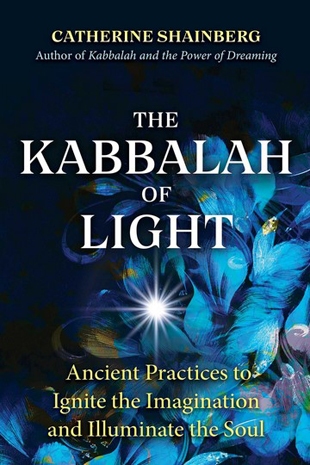This book is so full of spiritual practices that it must be the most applicable use of Jewish mysticism ever published in a single volume. Never have we seen a book that presents Kabbalah with so many exercises designed to enhance understanding. Sprinkled throughout the chapters are 160 numbered exercises from “Awake while Falling Asleep” (#1) to “Oneness” (#160).
Author Catherine Shainberg has taught Kabbalah internationally and practiced as a psychologist, healer, and dream expert. She is the lineage holder for the the Kabbalah of Light, as transmitted to her by Coilette Aboulker-Muscat with whom Shainberg spent 10 years of intense study in Jerusalem and an additional 20 years in collaboration. In 1982 Shainberg founded the School of Images, dedicated to teaching the techniques of this ancient tradition. Her earlier book, Kabbalah and the Power of Dreaming, earned one of our best spiritual books of the year awards in 2005. We reviewed it here.
Shainberg begins by delving deep into the subconscious as the source of all our creativity, symbols, mysteries, and as key to unlocking human transformation. In Part Two, she turns to how we apply and interact consciously with these subconscious powers and forces. With hope and expectation, she promises: “If the world’s destiny is birthed through God’s imagination, our own destiny must also be inherent in our imagination, made in the image of God’s imagination.”
She turns again and again to explaining principles from the Torah and Wisdom writings, including Divine names and the place of human beings in God’s ongoing creation — and in the Talmud, Midrash, and Zohar, subsequent great Jewish religious texts, opening new ways of seeking holiness, knowledge, and love in our lives.
Frequently she bridges her expertise in dreaming with passion for Jewish texts, as when explaining, “Creativity is like a little child who becomes more playful when she is paid attention to” because she wants readers to learn to remain conscious while dreaming at night. So exercise #25 is for lucid dreaming:
“Do this before lying down to sleep. Choose a small familiar object that you use all the time, such as a ring. Hold it in your hands. Close your eyes. Breathe out slowly three times, counting from three to one. See the one tall, clear, and bright. Look at your hands holding the object, feel the object, and decide to bring it into your dream tonight. Breathe out, and blow a zero out of your mouth, and see it becoming a circle of light before you. In this circle, imagine that you see your hands holding the object, and hear yourself saying: ‘I will awaken in my dream when I see myself holding this object.’”
What does such dreaming have to do with Kabbalah? Everything, Shainberg explains, since creativity and transformation are what mysticism is about and for. Sometimes she uses examples of love between partners as the best example of divine love, and fear of love as a symptom of spiritual emptiness. Exercise #100 is on the “Fear of Loving”: “Ask yourself what frightens you most about loving? Breathe out. When frightened, what do you usually fill the space with? Breathe out. Open your eyes.”
Our favorite portion of the book was Part Three, beginning with the fourteenth chapter, “The Heart-Centered Way.” The connection between the subconscious; this world of stimuli, pain, and emotion; and our yearnings for God are summarized by a line from the Midrash — “The heart follows where the eyes go” — and then shown to be accessible through nine exercises. The world needs more heart, and this book will help many to find and cultivate it.
